
What to see in Kazakhstan: Silk Road cities, camels, Almaty and its cathedral, incredible landscapes – but don’t mention Borat
- Kazakhstan, the world’s biggest landlocked country, turns 30 on December 16 determined to make the coming decade one in which tourism takes off
- It has a lot to offer – Silk Road monuments, stunning views, architecture ancient and modern, hiking and skiing, and modern entertainments

Oh to be finally free of travel lockdowns! I dreamed about future travels during the long hours spent cooped up in my tiny London flat. But never did I think my first destination might be Kazakhstan.
In mid-December 1991, Kazakhstan became the last republic to declare independence from the Soviet Union, which was dissolved just 10 days later. In the decades that followed, it established itself as one of the most economically successful republics in Central Asia, by the mid-2000s generating more than half of the entire region’s gross domestic product (mainly through the production of fossil fuels).
In recent years, the country has become the midsection of the Belt and Road Initiative, which was launched during Chinese President Xi Jinping’s September 2013 visit to the Kazakh capital, Astana (now Nur-Sultan), highlighting the country’s critical geographical role in China’s pivot to Europe.
With the climate crisis – and the need to leave fossil fuels in the ground – in clear view, Kazakhstan is looking to a future of tourism, investing in roads, transport, tourist complexes, landmark restorations and marketing. Much of this has been undertaken over the past 19 months, while the country has been closed to tourists during the coronavirus pandemic.

In a January 2021 speech to the national government, Prime Minister Askar Mamin pledged to invest 1.1 trillion tenge (US$2.52 billion) in tourism infrastructure, with particular attention paid to eco-tourism, national parks and a new high-speed rail line.
Ahead of Kazakhstan’s 30th birthday, which falls on December 16, I was invited, along with a small cohort of journalists and a group of social media influencers, to see the country before a full reopening to tourism in early 2022.
Other former Soviet republics, particularly in Central and Eastern Europe, were flooded with visitors after independence in the 1990s, but Kazakhstan and its neighbours remained quiet outposts visited only by intrepid backpackers. I first came in 2015, as Lonely Planet’s Central Asia editor.
Kazakhstan is the world’s biggest landlocked country and the ninth largest country on Earth. It is larger than Vietnam, Cambodia, Laos, Singapore, Malaysia, Thailand and Myanmar put together. It’s an awfully big place to be so unknown to so much of the world.
There is, however, one thing that many people do seem to know about Kazakhstan: an unflattering fictional television and film character (not created by the Kazakhs, I might add). And the country has suffered an image problem because of him. During my press tour, our hosts pleaded with us not to utter the B-word. Anything but Borat.
The thing is, Kazakhstan is nothing like You-Know-Who’s dour portrayal of it. It’s full of incredible landscapes, archaeological wonders pointing to its long history, Silk Road monuments and contemporary design, Brutalist architecture, cities full of relaxed cafes and restaurants, winter sports, Soviet nostalgia and welcoming people. In how many other places could you go skiing and camel-spotting in the same week?
So, in honour of a big birthday, here’s a look at Kazakhstan 30 years on and what the future holds.

Almaty
Kazakhstan’s capital throughout the Soviet era and until 1997, Almaty feels mature, with its grid of low-rise, concrete-block streets and pretty parks set against a line of mountain peaks. Much of the city was flattened in a 1911 earthquake, so there’s no old town. But the bright yellow Russian Orthodox Ascension Cathedral did survive the quake and has been through a major two-year restoration, which finished in 2019. Its golden spires and primary-colour trim are positively gleaming.
Almaty’s clean metro – one of only two systems in Central Asia – was started in 1988 but abandoned after Soviet dissolution. In 2011, the first line was finally finished, with two stations added in 2015 and further extensions set to open at the end of this year, plus upgrades for accessibility.
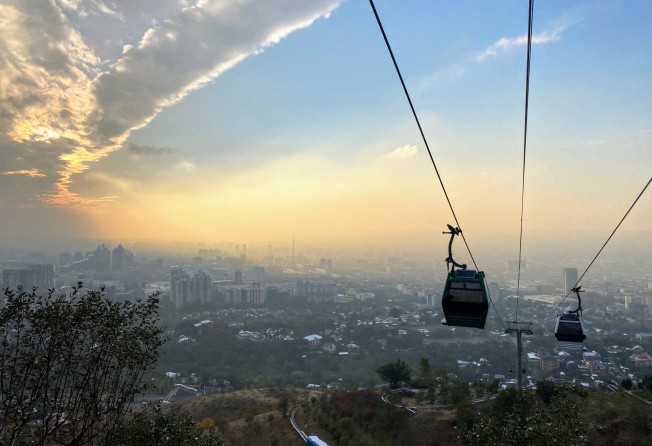
In 2016, the city opened a speedy cable car that floats riders to the top of Kök-Töbe Hill, where they discover amusements, a Ferris wheel and bars and cafes for sundowners with expansive city views.
Regional dishes such as plov (rice pilaf), manty (dumplings) and laghman (noodles) are best enjoyed in old-world chaikhana (teahouses) and locally brewed beers can be downed at bars dedicated to the craft.
Unfortunately, it’s still tough to find planet-friendly, locally run accommodation in Kazakhstan.
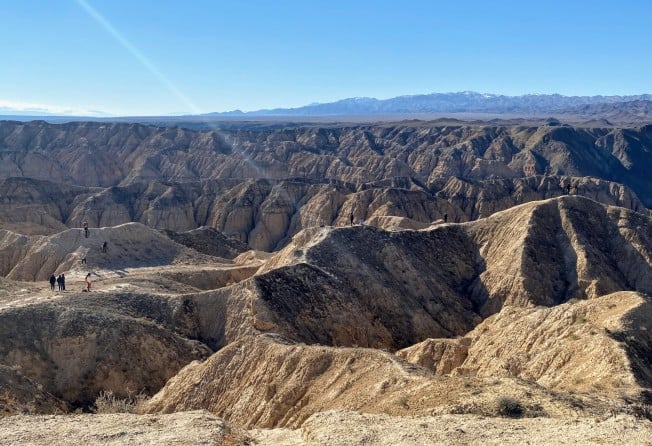
Charyn Canyon and the Tien Shan range
The area surrounding Almaty is a wonderful mix: the Tien Shan mountain range, steppe and canyonlands. An easy day trip is Charyn Canyon, known as the “Valley of Castles” for its rust-hued rock formations. A new highway makes access easier than ever and tourist infrastructure has been upgraded with signs that offer information on the canyon’s unusual, moonlike geology, microclimate, flora and fauna.
The canyon also has the most scenic toilet block I’ve ever seen, overlooking teetering rock pillars and faraway mountains.
Central Asia’s largest ski resort – Shymbulak – is only 25km from Almaty city centre. The Soviet Union’s Olympic ski and speedskating training centre now has a modern gondola, which opened in 2010. In summer, trails provide all levels of hiking.
The prime minister has announced plans to build new mountain eco-tourism accommodation, glamping and visitor centres, including at postcard-perfect Big Almaty Lake.
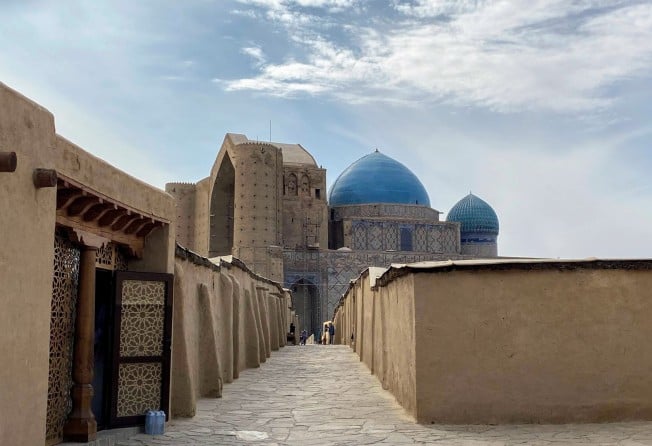
Turkistan
The ancient Silk Road city of Turkistan has been welcoming travellers and traders since the fourth century AD, but was put on the map in the 12th century when Sufi mystic Khoja Ahmed Yasawi brought Islam to Turkistan and established the religion in the Turkic language.
Yasawi died in the city. In 1397, the emperor Timur (Tamerlane) visited his grave and ordered a new mausoleum be built in a grand style, with ornate geometric tiling and blue domes. It was one of the earliest examples of the now-iconic Timurid architecture (others are in Timur’s capital city, Samarkand, in Uzbekistan). The mausoleum was inscribed on the Unesco World Heritage list in 2003.
For centuries Turkistan had been a pilgrimage site, but the town itself languished, small and dusty. Recent investment is set to turn it into the country’s newest showpiece, though.
Kazakhstan proved its prowess in city building when it moved the capital from Almaty to Astana in 1997, erecting a new city of hyper-contemporary skyscrapers and wide, planned avenues. The same trick has been used in Turkistan, which in 2018 ousted Shymkent as the regional administrative centre.
Hotels have been built, the Khoja Ahmed Yasawi Mausoleum has been restored and an entertainment complex, Karavan Saray, with restaurants, a theatre, equestrian performances and an evening boat show opened.
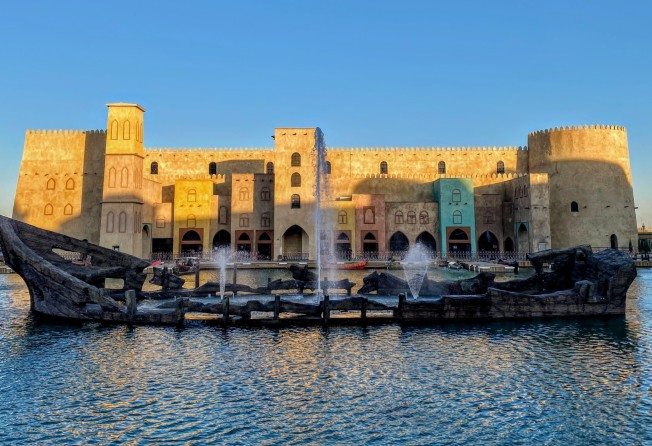
In 2020, the Hazrat Sultan International Airport was thrown up in record time (less than a year) a few kilometres outside Turkistan and now serves domestic flights and Turkish Airlines arrivals from Istanbul.
There are several other mausoleums to visit in the region, including that of Yasawi’s teacher, Arystan Bab, as well as the ruins of Otrar – once one of the busiest cities on the Silk Road – and Shymkent, with its traditional bazaar.
The future of tourism in Kazakhstan
In June 2021, the chairman of the Kazakh Tourism Industry Committee, Dastan Ryspekov, announced that the country would focus on the development of 10 scenic areas, including Nur-Sultan, Mangystau on the Aral Sea, the Baikonur space complex and several lakes and eco-resorts. There is also a “smart city” in development north of Almaty, near Kapshagai Lake, which will have a beach and casino resort.
Part of Kazakhstan’s problem has been its entrenched bureaucracy, a Soviet hangover. However, Murager Sauranbayev, deputy chairman of the International Information Committee of Kazakhstan’s Ministry of Foreign Affairs, says some processes have been simplified.
“The threshold for giving priority to tourism investment projects has been lowered, exempting investors from customs duties, import value-added tax, corporate income tax and land tax for 10 years. There are also in-kind grants planned specially for them,” he says.
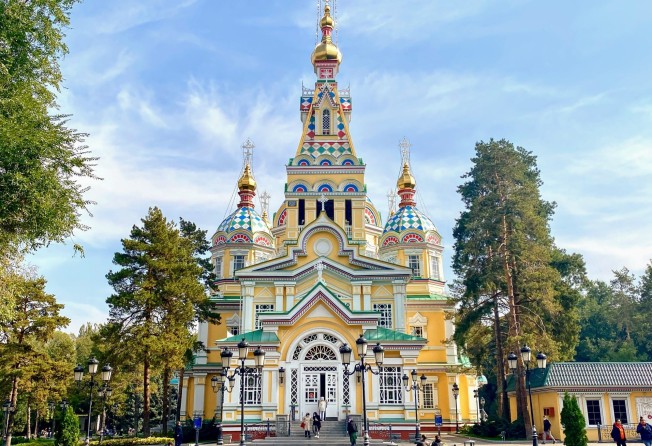
Arriving for a press tour to the gleaming Turkistan airport and checking into a shiny, new hotel in the middle of a pandemic made it very clear to me that Kazakhstan wants visitors. In the prime minister’s speech to the national government in January, he set an expectation for domestic tourist flow alone to increase by 22 per cent to about 4.5 million people per year.
The country’s size and history already give it cultural and historical assets. And with its significant natural resources and booming economy, Kazakhstan can certainly afford to invest in tourism. But will it succeed in attracting and developing the right kind, particularly in the context of the climate crisis?
As the country heads into its 30s, we can only hope to see a focus on sustainable development, transparency, community initiatives and green transport links such as high-speed rail lines that would make Kazakhstan a forward-looking, 21st century destination to be reckoned with.
Megan Eaves travelled to Kazakhstan as a guest of the Nursultan Nazarbayev Foundation.